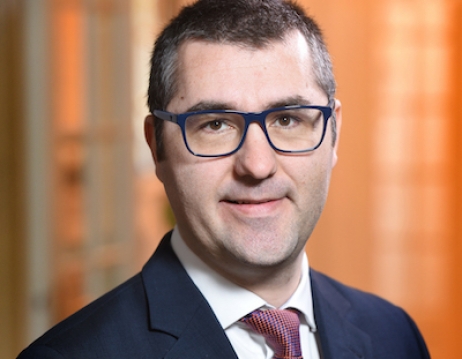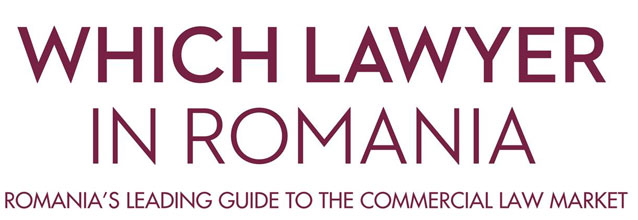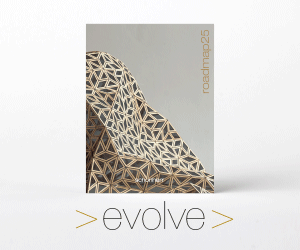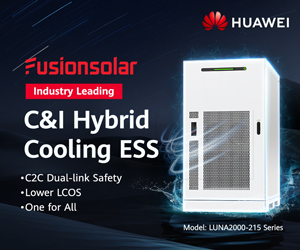
Article by Cosmin Stavaru, Partner, Bondoc si Asociatii
Solar power installed capacity in Romania is currently of almost 1400 MW, representing 6.8 % of the total installed capacity of the country. This capacity was largely installed in the period 2012 - 2016, during the first boom of renewable projects boosted by a generous support scheme. The pipeline of available projects was much bigger.
As from 2013 investments in solar decelerated due to the severe cut-off of the green certificates support and almost came to a halt after 2016 when the green certificates support scheme has been closed. However, as of last year a renewed interest in solar projects from investors seems to announce the dawn of a second boom for solar power in Romania.
Recent evolution - new opportunities
Luckily several factors have worked out to bring renewable projects (in particular, solar) to the spotlight once again. These include a sharp decrease in capital costs due to technology progress resulting in more efficient and cheaper solar panels, the committed EU political support for renewable energy under the Green Deal and, as a result, a shift of focus by the Romanian authorities to green energy once again. The first steps to shape a more renewables friendly legislation in Romania have already been taken, including by allowing bilateral PPAs outside centralized markets and launching the implementation process of a new state support scheme under the form of contracts for difference (CfD).
The rather consistent renewable target currently assumed by Romania in the integrated national energy and climate plan 2021-2030 would require around 3700 MW of new solar projects to be installed until 2030. Moreover, many solar projects developed in various stages under the previous support scheme and frozen after the cut-off of incentives in 2013 are still available on the market so that investors may take over such projects and do not need to start from scratch.
New opportunities may be also open due to (i) a favorable regulation of prosumers (i.e., end consumers who also generate electricity) which may benefit from off-take conditions and regulated prices and (ii) an improvement of regulations allowing for industrial consumers’ direct connection to a power plant (i.e., direct lines or closed distribution systems).
Development phase - solid foundations
Romania has a relatively large number of operating ground mounted solar projects with installed capacities of a few MW up to around 50 MW and even bigger capacities for pipeline projects. Roof-top projects started to gather momentum too. As such, there is a notable experience on the local market in developing solar projects.
In all cases, the development phase (consisting in planning and permitting) is of outmost importance, as it sets the legal foundations for the project. Often in practice the investor appoints a local developer under a development services agreement to manage the entire process of planning and permitting until ready to build status is reached and sometimes beyond, in the construction phase. Such development agreements must clearly define the developer’s role and risks allocated (for instance, the risk of delays in permitting or obtaining invalid permits, the risk of other services providers’ failure etc.). In practice, the developer’s role may vary from an interface / facilitator to a hands-on project manager.
In practice, the negotiation of a development contract could be difficult due to the potential expectations gap between the local developer and the investor regarding the scope of contract and risks allocation, so that in such situations agreeing on certain liability caps and on an insurance coverage or even adapt the project structure, if possible, to reduce the risks would be advisable. As in this initial phase of the project all costs are usually advanced / borne by the investors, they may be willing to assume more risks; nevertheless, any risks that can fire back later in the project, especially legal risks (e.g., a material permit which is not valid) should be properly covered / managed from the very beginning.
Permitting of a solar project in Romania is split into several streams, sometimes interconnected: (i) civil construction permitting stream (covering also urban planning and environmental aspects), (ii) specific set-up permit from the energy regulator ANRE, and (iii) grid access permitting stream. The relevant authorities have already significant experience with permitting process from the first generation of renewable projects, but difficulties may appear given that most of the legislation in this area is not customized for renewables (or solar), so that different interpretations may be embraced by different stakeholders.
In particular, the local authorities’ approach may vary from a formal and very cautious interpretation to a very flexible one leading to shortcuts which, however tempting, might prove to be a hurdle later in the project. This may happen for instance in the case of re-permitting of frozen projects, where the revival of old permits versusobtaining new ones may raise interesting legal discussions. Sometimes the law provides for a clearer and welcomed exemptions / shortcuts such as the rooftop panels installed by prosumers that do not need a building permit.
Construction phase - risk management
The construction phase is when the project is most at risk of being challenged, in which case the quality of the planning and permitting phase would be put to the test.
From a legal and project finance perspective, it is advisable for the construction phase to be managed under an EPC structure, whereby a single provider coordinates and assumes responsibility for all the works, including the supply and installation of the solar equipment and civil works for the plant. Many solar power plants have been built under EPC models in Romania, so this should be a rather familiar structure for the local market too.
In case an EPC structure is not used, an interface agreement should exist between the contractors to allocate the relevant risks to the party ultimately responsible / best positioned to assume such risks (for instance penalties passed on to the contractor who is ultimately responsible for delays or faults such as the solar panels provider missing the deadlines for delivery etc.). Absent any of the above, the unmanaged risks might fire back against the project company and, ultimately, against the investors.
Of course, the project company must secure, already from the development phase, a title to land apt for building purposes, which would typically be ownership right or superficies right. A legal difficulty on that front may be encountered in rooftop solar projects (if the owner of the building is not the owner of the land as well) giving that the legal definition of superficies relates to land. Another legal difficulty can stem from the potential prohibition regulated by Law no. 175/2020 to change the agricultural destination of land in case of sale; this would make any construction permitting process on purchased land legally challengeable, as the conversion into buildable category is required as part of that process. However, this prohibitive provision remains foggy as to its scope and extent and it is expected to be clarified or removed by the legislator rather sooner than later.
The practical key point during the construction phase is to observe the project coordinates permitted under the building permit, rule from which the law regulates just a limited exception. Any unlawful deviation exposes the project company to fines, stopping of construction works and even removal of illegal works.
Last but not least, as from 2013 the commissioning of solar power (photovoltaic) plants has been allowed only for equipment that meets certain technical conditions imposed by the regulator ANRE for grid compatibility purposes (although most of the standard equipment available on the market should meet such requirements, surprises might arise, in which case adjustments would need to be made and commissioning could be delayed).
Key to success - long term PPAs
A long term PPA provides the “oxygen” needed by a solar project to stay alive, so it must be carefully planned and secured from an early stage, even from the development phase. The importance of a long term PPA in a solar project remains paramount, as it is likely the most prominent bankability factor in the current unsecure economic context and fast changing regulatory framework.
Since 2012 Romania banned bilateral PPAs (with physical delivery) outside the centralized market and securing a PPA before the plant became operational was virtually impossible. However, Romania has taken steps to align its domestic legislation with the EU requirements such as EU Regulation no. 943/2019, according to which “long term electricity supply contracts shall be negotiable over the counter”. As such, PPAs concluded outside centralized markets have been expressly allowed by the Romanian energy law for the newly built power plants commissioned after 1 June 2020. In addition to that, the energy law expressly allows the conclusion of PPAs without having a generation license, provided such license is obtained at least 60 days before physical delivery of electricity. Furthermore, a systematic reading of the provisions of the energy law defining the markets and generators’ rights indicate that corporate PPAs should be also covered.
In parallel, the regulator ANRE has also adopted provisions on the path of bilateral PPAs liberalization and has defined last year the concept of “long term electricity supply contracts” from the EU Regulation no. 943/2019 as contracts over 1 (one) year term, which is now proposed to be lowered to 1 (one) month, according to a fresh new draft ANRE Order.
It is nevertheless worth mentioning that while bilateral long term PPAs should be generally preferable, Romania has quite a liquid energy exchange (consisting in several centralized markets managed by Opcom), including a recently launched centralized market for long term delivery contracts (PPAs). This centralized market is dedicated to future generators seeking to contract in advance the electricity output of their future power plant. Also, the forthcoming CfD support scheme to be implemented by Romania will guarantee the participants a fixed price for their generated electricity during the scheme application (although not the offtake), thus, enhancing the liquidity of the project. There is no officially announced timing for the implementation of the CfD scheme, but this is generally expected to happen over the next 1-2 years.
Overall, the future of solar power in Romania seems now mostly sunny, emerging from the darker recent times.



 February 08, 2021 13:21
February 08, 2021 13:21 










